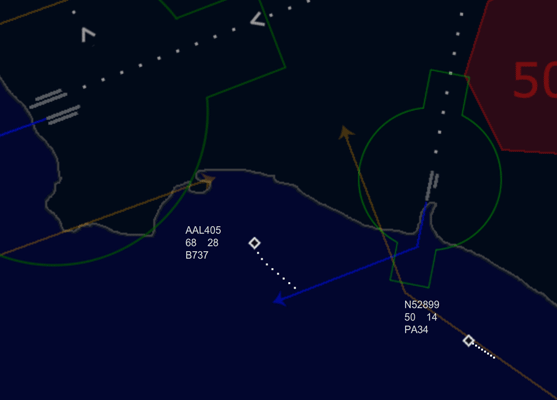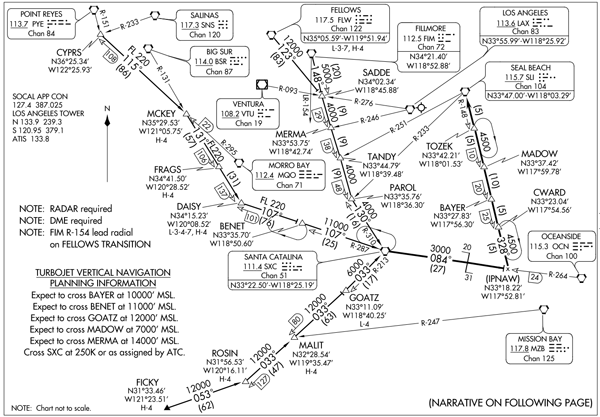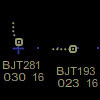Now that Backyard Brat is finished, it’s full steam ahead for our next air traffic control game, Radar Chaos: World Edition. This one is guaranteed to raise your anxiety level. Based on real-world airports this time, RC3 will offer five difference airspaces, like Los Angeles shown below. The simulation will be based on the game engine from the very first Radar Chaos, but with improved graphics. The airspaces will contain real-world airport details, tailored to promote the likelihood of midair conflict. “Challenge” is our goal in this version.
The unofficial list of airport sectors included in Radar Chaos: World Edition are:
- Los Angeles International
- Las Vegas McCarran
- Hong Kong
- London Heathrow
- Memphis
A Word On Realism
Those of you who have played the first and second versions of Radar Chaos may have noticed a large difference in the level of realism between the two. The first edition was entirely fictitious. The airports came straight out of our imagination, custom-designed to be challenging and fun. The second edition was based on the Hawaiian Islands and was highly realistic, right down to the aircraft types for each airline. Radar Chaos: Hawaii Edition had real-world SIDs and STARs, too.
Unfortunately, adding realism does not necessarily add ”fun” to such games. In fact, the first version is still our favorite of the two. We’ve received a few emails already, asking why the third edition of Radar Chaos is taking a step backwards in terms of realism. We’re receiving the usual feedback, like “How come you aren’t using real-world STARs? Los Angeles arrivals should cross MERMA at 14,000 feet on the LEENA STAR, Fillmore Transition”.
I don’t know how to say this, but “real-world ATC” isn’t always fun. If you are looking for a fun air traffic control game that’s highly realistic, you may not find one. I love the idea of basing my games on real-world locations. However, the routes and procedures will be at our discretion, with words like “fun” and “challenging” in mind.
The maps will be fairly realistic, but not spot on. Take LAX, for example. The range is inaccurate. Burbank airport and Los Angeles International are actually much farther apart. But how much fun would that be? So we’ve lied here and there, in an effort to make midair conflicts happen more often. I think you’ll like it. It’ll be a fun game, I promise.
We really do value your feedback and ideas! As always, we can be reached at support@bigfatsimulations.com. We never sleep, so feel free to send us your thoughts, 24/7.





.gif)

